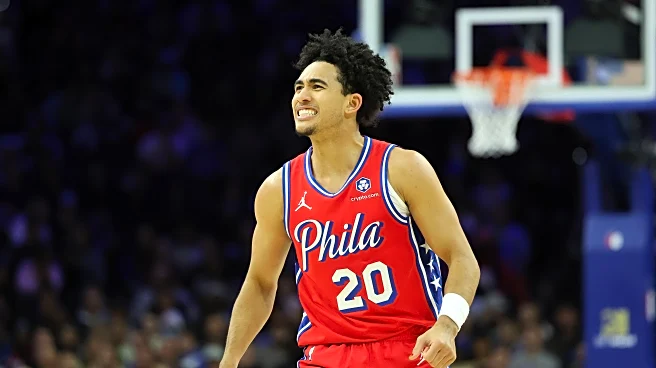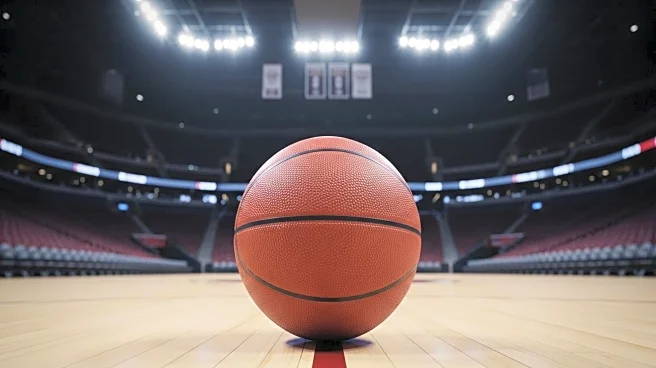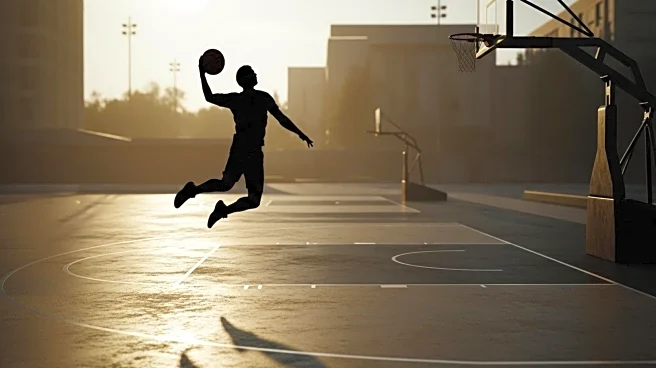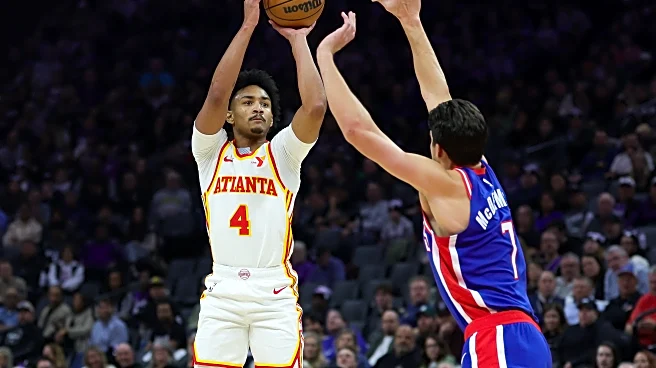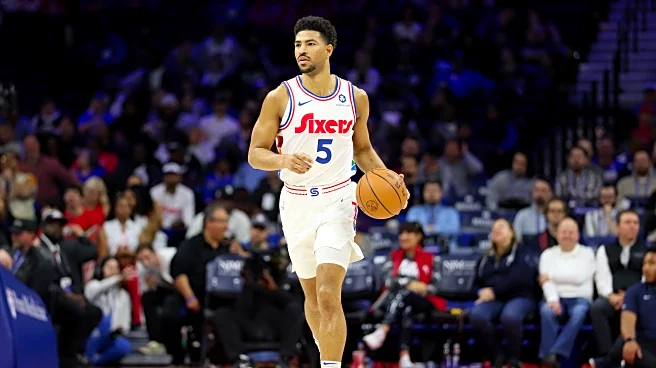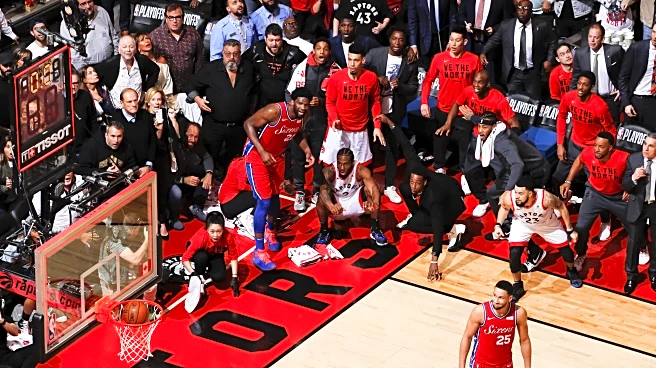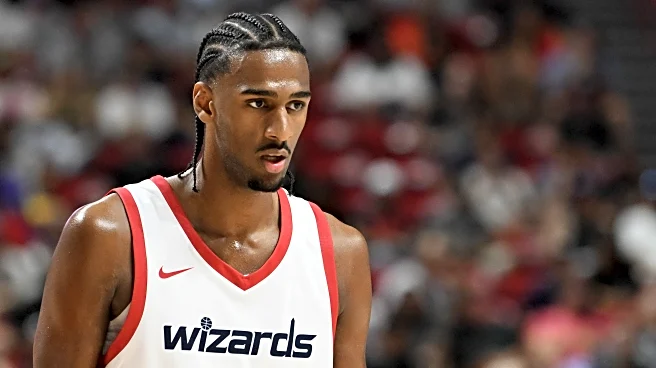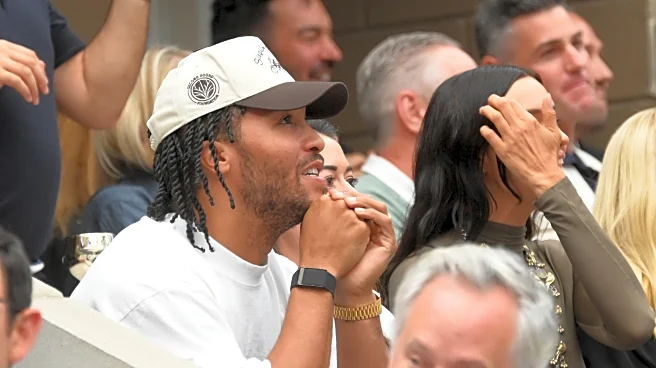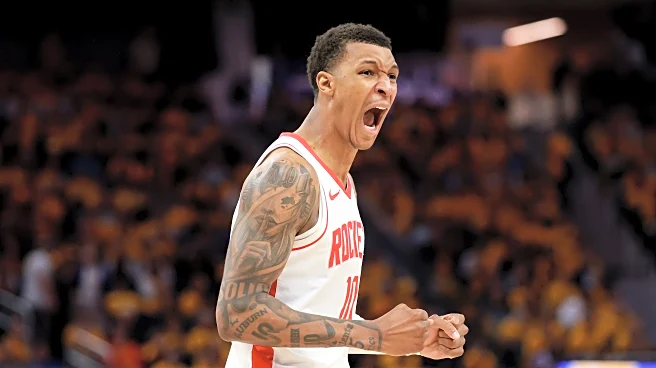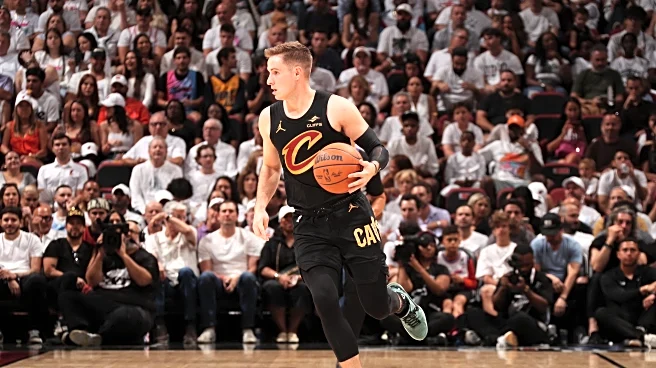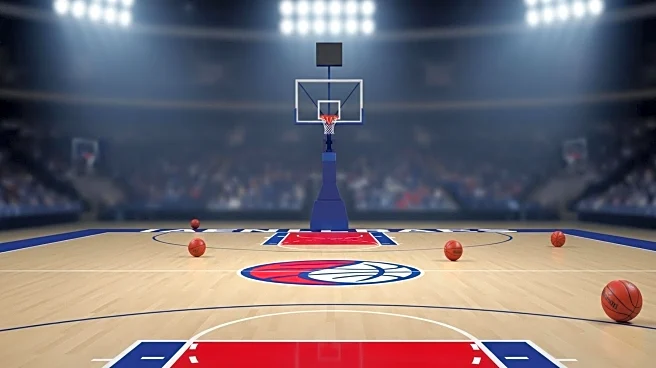It feels like just yesterday the Sixers drafted Jared McCain with the 16th overall pick, coming off a turbulent season marred by the James Harden holdout and a disappointing first-round exit. At the time, McCain felt more like a consolation prize than a franchise changer — a mid–first round pick in what many considered a weak draft didn’t exactly inspire excitement.
What nobody saw coming was just how good McCain would be in his rookie year. He didn’t look like a first-year player at all. In fact,
more often than not, he looked like the Sixers’ best player when he was on the floor. Before the injuries piled up and the team shifted into tank mode, McCain consistently held his own — and at times even stood out — alongside Joel Embiid, Tyrese Maxey and Paul George. That’s not what you expect from a rookie, especially one drafted outside the lottery.
Much like the rest of the roster, McCain’s rookie campaign was cut short when he tore his meniscus in mid-December and underwent surgery. Without that setback, he very likely would have been in the Rookie of the Year conversation. Now, with both the season and the injury behind him, McCain and the Sixers find themselves at a crossroads in the team’s timeline.
The frontcourt is shaky, with injuries to George and Embiid piling up to the point where many wonder if either can still perform at their peak. Meanwhile, the backcourt is crowded with young talent. Maxey is firmly established, newly drafted VJ Edgecombe is expected to carve out a role, and Quentin Grimes — assuming he returns — will also be pushing for minutes. That leaves big questions for McCain. How will he fit into this evolving mix? What should fans expect from him in year two? And will his play force Nick Nurse’s hand to the point where starting him becomes unavoidable?
Pretty much every recent conversation eventually circles back to the guard rotation and the team’s abundance of guards. While I think this concern has been somewhat overblown in recent months — I’d argue it’s far better to have too many capable guards than too few — it’s still a valid question. Among the quartet of Maxey, McCain, Edgecombe and Grimes, McCain seems to be the most variable.
Among the four, Maxey and McCain are the most questionable defensively, which is a key factor in whether a dual guard rotation can work. Everyone knows how much the Sixers have invested in Maxey, who is now a solidified All-Star on a massive contract. At this point, he appears to be the only one slated to start right away. Given that, it’s hard to imagine McCain starting alongside Maxey on day one — unless he truly lights it up in training camp and forces Nurse to simply play the best talent.
While many might scoff at the idea of McCain coming off the bench, it’s probably the best route for him in the short-term. He’s an offensively gifted player who has shown he can create with or without the ball in his hands. At this stage of his career, it’s important for him to continue getting reps in both roles. Even off the bench, he’s likely to play at least 25 minutes per game and may share the court with Maxey at times. As for his fit with the other guards, I have few concerns; both Edgecombe and Grimes should be excellent defenders who mesh well with McCain and Maxey.
On the other hand, McCain could earn a significant starting role if he makes strides defensively. I don’t expect him to ever become a great defender, but he has shown flashes of good timing and uses his low center of gravity effectively against bigger, taller opponents. Many have criticized the Sixers for bringing back Kyle Lowry, but he is the epitome of the defensive standard McCain should be aiming to emulate. Fortunately for McCain, he won’t be far from Lowry — just a few bench spots away — giving him plenty of opportunity to learn. If McCain can hold his own on defense, it will be difficult for Nurse not to get him significant minutes on the court.
When it comes to expectations for McCain in Year 2, much depends on him building on where he left off nearly a year ago. McCain did everything right in terms of doing what was necessary to earn his minutes on the court. He’s a gifted offensive player and will likely see significant off-ball action, assuming the big names remain healthy — which is a big “if.” He moves frequently without the ball and has demonstrated elite catch-and-shoot ability, including no-dip threes, a skill first introduced to the Sixers by Nico Batum. Theoretically, the Sixers have the offensive fire power to seriously produce on ball, and McCain’s floor spacing will be invaluable to that.
However, if the wheels fall off the wagon again, expect McCain to become a featured player in the Sixers’ offense with more on-ball reps. It will especially come down to George; if he’s out for an extended period or misses time to start the year, the Sixers will rely on McCain’s scoring ability to avoid overtaxing Maxey. McCain has also shown he can make reads and handle the basketball, which is likely something the team will experiment with throughout the season. At a minimum, you can expect him to fill a role similar to what JJ Redick had in Philly, with an added touch of playmaking.
Almost all talk about the Sixers is understandably doom and gloom. For a moment, however, let’s be positive: what if things actually go right for McCain? Suppose he comes in, lights it up again, and looks like the best player on the floor more often than not. Nurse wouldn’t just give him a starting role; he could be looking at upwards of 34 minutes per game. How would that work from a rotational standpoint, and alongside the other guards I haven’t touched on much yet?
From a rotation perspective, it would be fairly simple. You’d ensure that at least one of Maxey or McCain is on the floor at all times. Maxey typically averages around 36 minutes per game, so McCain would see roughly 12 minutes without him and around 25 minutes alongside him. Both Edgecombe and Grimes will likely be vying for 25–30 minutes, and I think that’s manageable if Maxey and McCain share extended minutes together. Grimes and Edgecombe project as excellent defenders, and I imagine the Sixers will experiment with them in some switch-heavy or perimeter-defense situations.
If McCain earns a larger-than-expected role again, the key for the Sixers beyond the guard rotation will be their forwards — specifically three players who are plus defenders with positive wingspans, similar to what the Cleveland Cavaliers do with Donovan Mitchell and Darius Garland. Playing at least two forwards at all times will be critical, which makes the newer additions — Trendon Watford, Dominick Barlow and Jabari Walker — very important. If one of those players hits, they’ll likely be featured heavily in a Maxey-McCain-centric lineup alongside Joel Embiid. We could also see the Sixers experiment more with Adem Bona, a proven rim protector, pairing him with Embiid or another big man.
As you can see, there are quite a few moving parts when it comes to McCain. While the uncertainty might be murky, I’d argue it could be a massive positive if he plays his way into a featured or even starting role this season. We saw what he’s capable of in 23 games last year, and if that was a glimpse of what’s to come, the Sixers will certainly face some tough decisions and lineup adjustments — making McCain the biggest variable among their core group of guards.
